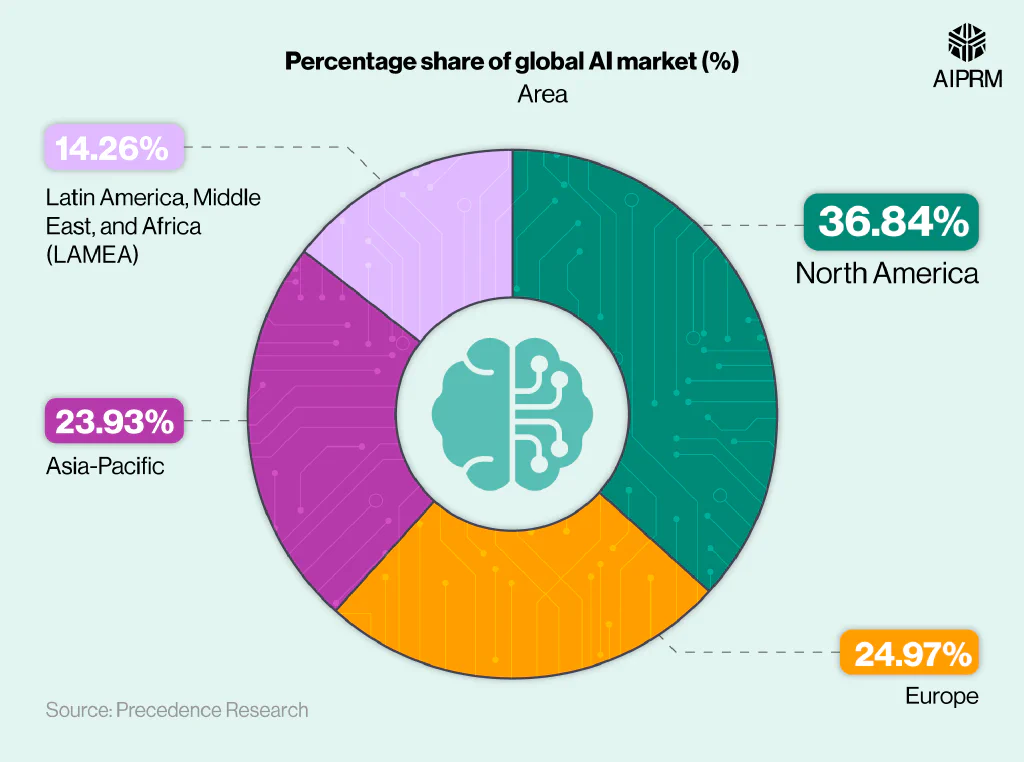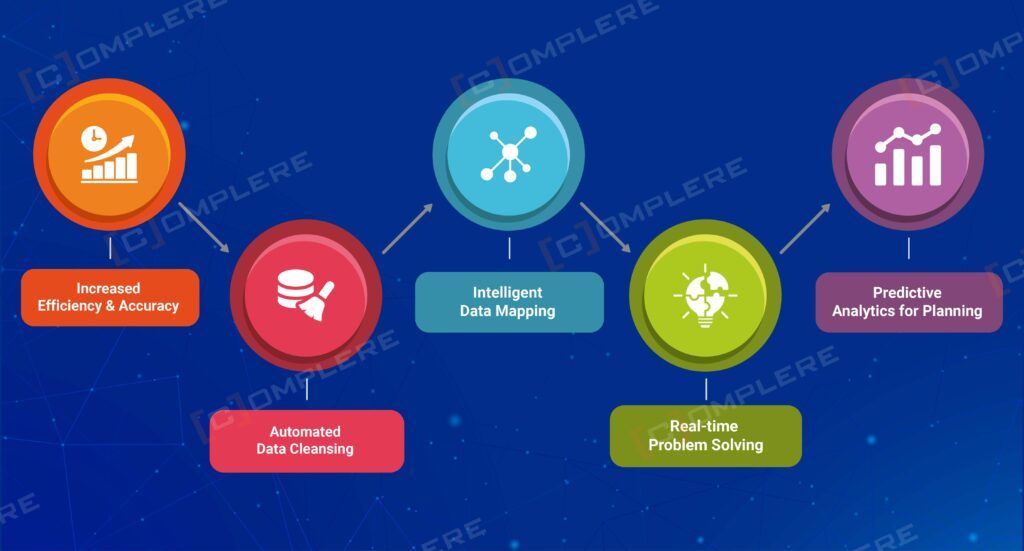In the rapidly evolving world of technology, the year 2024 is poised to be a transformative one for data analytics, with artificial intelligence (AI) playing a pivotal role in shaping its future. As businesses strive to stay ahead of the curve, the integration of AI into data analytics has become a strategic imperative, unlocking new possibilities and presenting both opportunities and challenges.
The Rise of Generative AI in Data Analytics
One of the most exciting developments in the realm of AI is the emergence of Generative AI (GAI) tools, such as the renowned ChatGPT. These advanced language models have the ability to understand natural language and generate human-like responses, making them a game-changer for data analytics.
ChatGPT, in particular, has the potential to revolutionize how businesses interact with and extract insights from their data. By providing an intuitive, conversational interface, these tools empower users to ask questions, explore data, and uncover hidden patterns with unprecedented ease.
This democratization of data analytics is a significant shift, as it allows non-technical users to engage with complex datasets and derive meaningful insights without the need for specialized technical skills.
However, it’s important to note that while these GAI tools excel at natural language processing and text generation, they may struggle with certain aspects of data analytics, such as complex mathematical calculations and factual accuracy. Business leaders and data analysts must be mindful of these limitations and develop a balanced understanding of the capabilities and constraints of these powerful AI tools.

The Transformative Role of AI in Data Analytics
The impact of AI on data analytics extends far beyond the realm of conversational interfaces. AI has become a fundamental driver of innovation, enhancing various aspects of the data analytics process.
Augmented Analytics: Empowering Non-Technical Users
One of the key trends in data analytics is the rise of augmented analytics, which leverages AI and machine learning to enhance human capabilities in data exploration and analysis.
Augmented analytics platforms provide users with intuitive, AI-powered tools that automate tasks such as data preparation, cleansing, and integration, allowing non-technical users to conduct sophisticated analytics on their own.
This democratization of data analytics is a game-changer, as it empowers a broader audience within organizations to make data-driven decisions. By reducing the technical barriers to entry, augmented analytics enables business users, subject matter experts, and decision-makers to uncover insights and derive actionable intelligence from their data.
Synthetic Data Analytics: Bridging the Gap in Machine Learning
Another significant impact of AI on data analytics is the increasing use of synthetic data. Synthetic data refers to artificially generated information designed to facilitate machine learning and analysis, often in situations where real-world data is scarce, sensitive, or difficult to obtain.
The rise of synthetic data is particularly relevant in the context of data privacy and security regulations, which have placed restrictions on the collection and use of real-world data. By leveraging AI-powered synthetic data generation, organizations can create realistic, yet anonymized datasets that can be used for training machine learning models and conducting data analytics without compromising individual privacy.
Experts predict that by the end of 2024, approximately 60% of the data used in building AI systems will be synthetic.
This trend not only addresses data privacy concerns but also provides a more cost-effective and controllable option for organizations looking to enhance their data analytics capabilities.
Predictive Analytics and Forecasting in Data Analytics
AI has also transformed the field of predictive analytics, enabling businesses to anticipate market trends, understand customer behaviors, and identify potential risks with greater accuracy. By leveraging advanced machine learning algorithms, AI-powered predictive analytics can analyze vast amounts of data, uncover hidden patterns, and generate accurate forecasts to guide strategic decision-making.
For example, AI-driven predictive analytics can help retailers anticipate consumer demand, optimize inventory levels, and personalize marketing campaigns. In the financial sector, AI can be used to detect fraud, assess credit risk, and make investment decisions.
The integration of AI into predictive analytics has become a crucial competitive advantage for organizations, allowing them to stay ahead of the curve and make more informed, data-driven decisions.
Automated Data Aggregation and Preparation
The impact of AI on data analytics extends beyond just the analysis and interpretation of data. AI is also transforming the way data is sourced, aggregated, and prepared for analysis.
Through the use of intelligent automation, AI algorithms can streamline the data aggregation process, seamlessly integrating disparate datasets from various sources into a unified platform. This not only enhances efficiency but also ensures that organizations have access to a comprehensive and well-structured dataset, ready for in-depth analysis.
Moreover, AI-powered data preparation tools can automate tasks such as data cleansing, transformation, and integration, reducing the time and effort required to make data analysis-ready. This frees up data analysts to focus on more strategic and value-added tasks, rather than getting bogged down in the tedious aspects of data management.

Challenges and Considerations in Data Analytics
While the integration of AI into data analytics presents numerous opportunities, it also comes with its fair share of challenges and considerations that organizations must address.
Lack of Contextual Understanding
One of the primary limitations of GAI tools like ChatGPT is their lack of deep contextual understanding. These models are trained on a vast corpus of data, but they may struggle to grasp the nuances and specific business context that is crucial for effective data analytics.
For example, while ChatGPT may be able to provide a general overview of a dataset or generate natural language insights, it may not have the domain-specific knowledge to interpret the data in the context of a particular industry or business problem. This can lead to inaccurate or misleading conclusions, which can have significant implications for decision-making.
To mitigate this challenge, organizations must develop a balanced approach, leveraging the strengths of GAI tools while complementing them with subject matter expertise and domain-specific knowledge from their data analysts and business experts.
Data Privacy and Ethical Considerations
As the use of AI in data analytics becomes more prevalent, the importance of data privacy and ethical considerations cannot be overstated.
With the increasing volume and sensitivity of data being processed, organizations must ensure that they are adhering to relevant data privacy regulations and upholding the highest standards of data governance.
The use of synthetic data, while beneficial in many ways, also raises ethical questions around the authenticity and representativeness of the generated data. Organizations must carefully evaluate the provenance and quality of synthetic data to ensure that it accurately reflects the real-world scenarios it is intended to represent.
Additionally, the deployment of AI-powered analytics tools must be accompanied by robust ethical frameworks that address issues such as algorithmic bias, transparency, and accountability. Failure to address these concerns can lead to unintended consequences and erode public trust in the use of AI in data analytics.
Talent Acquisition and Upskilling in Data Analytics
The integration of AI into data analytics also presents challenges in terms of talent acquisition and upskilling. As the demand for data analysts and data scientists with AI expertise grows, organizations may struggle to find and retain the right talent to drive their data analytics initiatives.
To address this challenge, organizations must invest in comprehensive training and development programs to upskill their existing workforce, equipping them with the necessary skills and knowledge to effectively leverage AI in data analytics. This may include training on AI-powered tools, machine learning algorithms, and ethical data practices.
Additionally, organizations should consider partnering with educational institutions and industry organizations to develop specialized programs and certifications that can help build a pipeline of AI-savvy data analytics professionals.

The Future of AI-Powered Data Analytics
As we look towards the future, the impact of AI on data analytics is poised to become even more profound. In the coming years, we can expect to see further advancements and integration of AI across the entire data analytics ecosystem.
Conversational Data Exploration in Data Analytics
The rise of GAI tools like ChatGPT is just the beginning of a broader trend towards conversational data exploration.
These natural language interfaces will become increasingly sophisticated, allowing users to engage with data using everyday language, ask follow-up questions, and receive contextual insights in real-time.
This shift towards a more intuitive and user-friendly data analytics experience will empower a wider range of stakeholders, from business leaders to frontline employees, to derive valuable insights from their data without the need for specialized technical skills.
Edge Computing and Real-Time Analytics
Another emerging trend in the world of AI-powered data analytics is the rise of edge computing. By processing data closer to the source, at the “edge” of the network, organizations can achieve real-time insights, reduced latency, and improved security.
As the Internet of Things (IoT) continues to proliferate, the volume of data generated by connected devices will increase exponentially. Edge computing, combined with AI-powered analytics, will enable organizations to extract insights from this data in near real-time, allowing them to make faster, more informed decisions and respond to changing market conditions with agility.
Ethical AI and Responsible Data Practices
As the adoption of AI in data analytics continues to grow, the importance of ethical AI and responsible data practices will become increasingly paramount.
Organizations will need to develop robust governance frameworks that address issues such as algorithmic bias, data privacy, and transparency.
This will involve the implementation of ethical AI principles, the establishment of cross-functional teams to oversee AI deployment, and the development of comprehensive data management policies that prioritize data security, privacy, and responsible use.
By addressing these ethical considerations upfront, organizations can build trust, ensure regulatory compliance, and unlock the full potential of AI-powered data analytics.
Conclusion
The year 2024 marks a pivotal moment in the evolution of data analytics, with AI playing a transformative role in shaping its future. From the rise of Generative AI tools to the advancements in augmented analytics, synthetic data, and predictive forecasting, the integration of AI has unlocked new possibilities for organizations to derive meaningful insights from their data.
However, this transformation is not without its challenges. Organizations must navigate the complexities of contextual understanding, data privacy, and talent acquisition to ensure that they are leveraging AI in a responsible and effective manner.
By addressing these considerations and embracing the opportunities presented by AI-powered data analytics, businesses can position themselves for success in the years to come.
In Summary
As we look ahead, the future of data analytics is undoubtedly intertwined with the continued advancements in AI. By embracing this transformative technology and developing a balanced, strategic approach, organizations can unlock the full potential of their data, drive innovation, and stay ahead of the curve in an increasingly competitive and data-driven landscape.
Don’t forget to subscribe to Shift Gear X for more articles. Need expert advice or consulting? Be sure to visit Shift Gear.
Check this also – Adopting AI in the Workplace: Your Job is Safe If You Do This Today – Information Technology Trends & Current News | Shift GearX
You will also love – Remote Triaging: Optimizing Automated Business Processes Today – Information Technology Trends & Current News | Shift GearX










